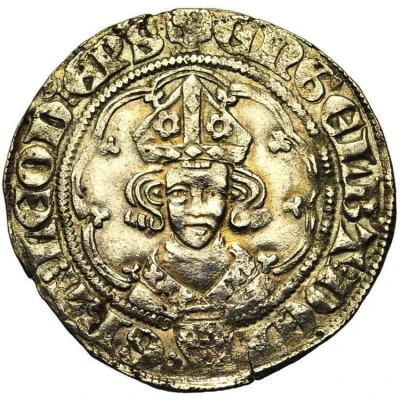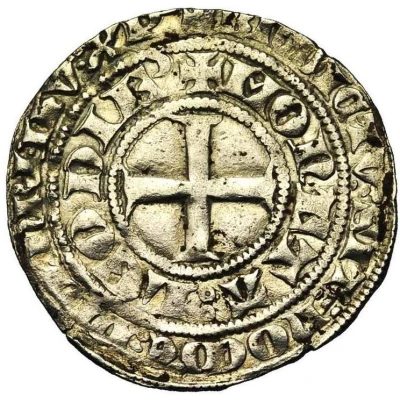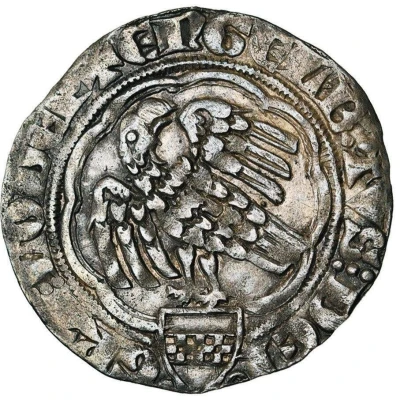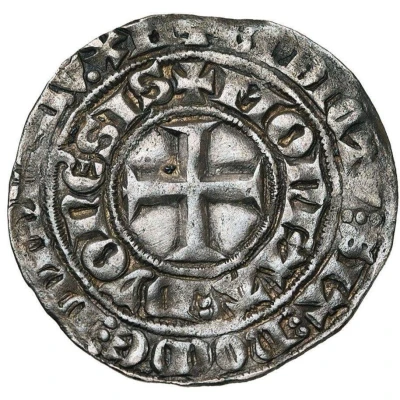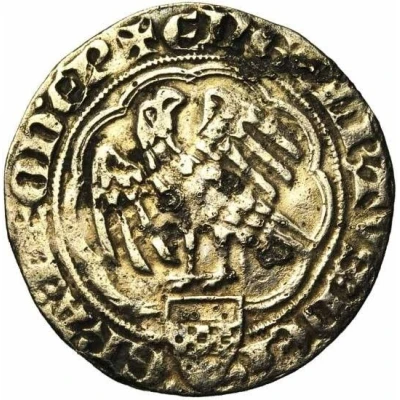
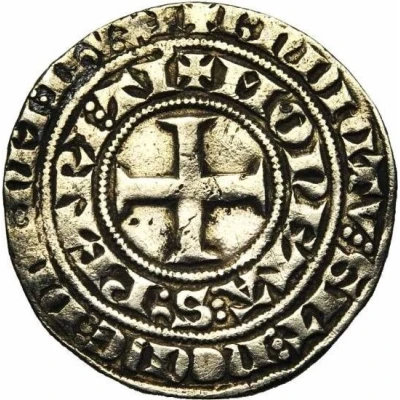

Groat - Engelbert de la Marck Eagle; Maastricht ND
1346 year| Silver | 3.25 g | - |
| Issuer | Prince-bishopric of Liege (Belgian States) |
|---|---|
| Prince-bishop | Engelbert III of the Mark (Engelbert III von der Mark) (1345-1364) |
| Type | Standard circulation coin |
| Year | 1346 |
| Value | 1 Groat |
| Currency | Gros (1274-1456) |
| Composition | Silver |
| Weight | 3.25 g |
| Shape | Round (irregular) |
| Technique | Hammered |
| Demonetized | Yes |
| Updated | 2024-10-04 |
| Numista | N#308059 |
|---|---|
| Rarity index | 100% |
Reverse
Short cross pattée surrounded by double legends
Script: Latin (uncial)
Lettering:
✠ BnDICTV ⋮ SIT ⋮ nOmE ⋮ DnI ⋮ nRI ⋮ IhV ⋮ XP
✠ mOnETA ⋮ S': PETRI ⋮ TI
Lettering (regular font):
✠ BNDICTV ⋮ SIT ⋮ NOME ⋮ DNI ⋮ NRI ⋮ IHV ⋮ XP
✠ MONETA ⋮ S': PETRI ⋮ TI
Unabridged legend:
Benedictum sit nomen domini nostri Jesu Christi
Moneta Sancti Petri, Traiectum ad Mosam
Translation:
Blessed be the name of Our Lord Jesus Christ
Coinage of St. Peter's, Maastricht
Comment
Chestret 244.
A known spelling variant reverse, uses a contracted form of the place name, S : PeTRIT
According to Jean Elsen, here is how the Sint Pieter (St. Pierre / Saint Peter) mint in Maastricht came to be:
The mint of St. Peter mentioned in the reverse legend was located in the parish of the same name, a fief of the Bishop of Liege, outside the walls of the city of Maastricht. Engelbert de la Marck, unable to suppress a rebellion of his Liegeois subjects, was forced to flee (Liege) in 1345 and set up his primary mint there. The principality wasn't pacified until 1347, when the bishop's forces, with help from those of the Duke of Brabant, defeated the rebels at Waleffe.
Interesting fact
One interesting fact about the Groat coin is that it was issued during the reign of Engelbert de la Marck, who was the Prince-Bishop of Liège from 1344 to 1364. This coin was part of a series of coins that were minted during his rule, and it features an image of an eagle on one side and the prince-bishop's coat of arms on the other. The use of silver in the coin's composition was a significant choice, as it was a valuable and durable metal that was widely used in coinage during the Middle Ages.
